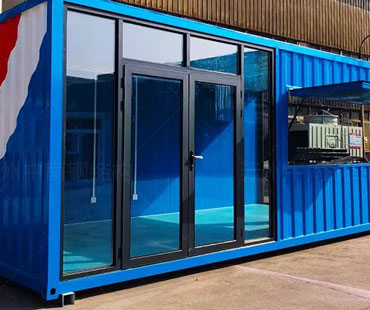In an increasingly globalized world, the transportation of goods by container has become a cornerstone of international trade. As the backbone of maritime logistics, containers are pivotal in moving everything from raw materials to finished products across vast distances. However, the safety of these goods during transit is paramount, necessitating a comprehensive approach to container safety.
The significance of container safety cannot be overstated. Every year, millions of containers are moved across the world's oceans, railways, and roads. Each container is a potential vessel for valuable cargo, and any compromise in safety can lead to substantial financial losses, damage to reputation, and even legal liabilities. Moreover, ensuring the safety of goods is not only a matter of protecting assets but also about maintaining the integrity of supply chains, which can be affected by delays and losses.
1.Physical Damage: Containers can suffer from various forms of physical damage during loading, unloading, and transit. This can include dents, punctures, or even complete structural failures. Rough handling, extreme weather conditions, and poor stacking practices can exacerbate these issues.
2.Theft and Pilferage: Containers are often targets for theft and pilferage, especially in high-risk areas. Unscrupulous individuals may attempt to access containers to steal valuable goods, leading to significant losses for businesses.
3.Environmental Factors: Containers are exposed to various environmental conditions, including moisture, temperature fluctuations, and corrosive substances. These factors can damage goods, especially those that are temperature-sensitive or susceptible to rust and rot.
4.Compliance and Regulatory Issues: Different countries have varying regulations regarding the transportation of goods, especially for hazardous materials. Non-compliance can lead to legal penalties, delays, and additional costs.

To mitigate these risks and ensure the safety of goods during transportation, several best practices have been developed:
1.Thorough Inspection of Containers: Prior to loading, containers should undergo rigorous inspections to check for any signs of damage, wear, or previous contamination. This includes checking seals, locks, and structural integrity to ensure they are fit for transport.
2.Proper Packing Techniques: Goods should be packed securely within containers to prevent movement during transit. Utilizing dunnageand bracing materials can help stabilize cargo and prevent damage. Additionally, ensuring that the weight is evenly distributed can minimize the risk of shifting, which can lead to accidents or damage.
3.Use of High-Quality Seals and Locks: Employing high-security seals and locks on containers can deter theft and unauthorized access. These security measures should be inspected regularly to ensure they remain effective throughout the journey.
4.Monitoring Environmental Conditions: For sensitive cargo, consider using temperature and humidity monitoring devices within containers. These devices can provide real-time data on environmental conditions, allowing for immediate action if parameters exceed acceptable limits.
5.Training and Certification: Ensuring that personnel involved in the loading and unloading processes are well-trained is crucial. They should be knowledgeable about safety protocols, proper handling techniques, and emergency procedures. Regular training sessions can help reinforce these practices and keep safety at the forefront of operations.
6.Implementing Technology: The integration of technology in container safety can enhance monitoring and tracking capabilities. GPS tracking systems provide real-time location information, while IoT sensors can monitor the condition of goods during transit. This data can be invaluable for identifying potential issues before they escalate.
7.Regular Maintenance and Upkeep: Containers themselves require regular maintenance to ensure their structural integrity. Companies should establish a routine maintenance schedule that includes inspection, repair, and refurbishment of containers to extend their lifespan and effectiveness.
8.Compliance with International Standards: Adhering to international shipping regulations and standards, such as those set by the International Maritime Organization (IMO) and the International Organization for Standardization (ISO), is critical. These standards ensure safe practices in the transportation of goods, particularly for hazardous materials.
Container safety is a multifaceted issue that requires vigilance, proper techniques, and the integration of technology to protect goods during transportation. By addressing common risks and implementing best practices, companies can significantly reduce the likelihood of damage, theft, and compliance issues. As the logistics and transportation industry continues to evolve, an ongoing commitment to safety will not only protect valuable assets but also enhance the overall efficiency and reliability of supply chains. In a world where trade is increasingly interlinked, prioritizing container safety is essential for the success of businesses across the globe.


